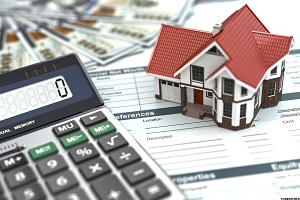 In order to pay for mortgage down payment, borrowers occasionally use personal loans. Usually, mortgages are only granted with a down payment of about fifth of the overall mortgage – this kind of amount (sometimes dozens of thousands of dollars) leaves many people without the means to afford the mortgage. Applying for a different personal loan responsibly may just be the answer to such a financial problem.
In order to pay for mortgage down payment, borrowers occasionally use personal loans. Usually, mortgages are only granted with a down payment of about fifth of the overall mortgage – this kind of amount (sometimes dozens of thousands of dollars) leaves many people without the means to afford the mortgage. Applying for a different personal loan responsibly may just be the answer to such a financial problem.
What Is Exactly a “Personal Loan”?
Traditionally, the meaning of a personal loan is loan from a credit union or a bank that does not necessitate a collateral as security; accordingly, you should expect higher interest rates of personal loans than in other sorts of loans. The shorter the term of the personal loan, the lower the interest rates will commonly be – although you need to take into account the amortization, which changes from one loan package to another.
Another kind of personal loan can perhaps be more simple and intimate for you: borrowing from a friend, a family member or any private person from whom you take a loan in order to cover the mortgage’s down payment. The interest rates of such a loan are solely dependent on the agreement you make with this private lender, as well as the structure of your repayment. The advantage of such a personal loan might be low interest rates (or not at all) and comfortable spreading of your repayment; the disadvantage is of course conducting business with someone you know, which can lead to awkward situations.
A Personal Loan as a Down Payment for Your Mortgage
No matter which sort of personal loan you ultimately choose (as aforementioned described), you need to review and calculate your entire positions comprehensively beforehand and only then decide if you are prepared for such a financial move. Obviously, determining to get two different loans from two different sources withholds much greater financial risk for you. The duration of fully repaying a mortgage is customarily a period of fifteen to thirty years; fully repaying the personal loan usually takes up to five years, depending on the structure and interest rates you agreed upon with your lender.
You must evaluate thoroughly and realistically before choosing to take this path. In your considerations you should take into account two opposing variables: on one side all your assets and income projections, and on the other side all your financial liabilities and expanses during this period. You should weigh them against each other and only then determine if you could afford to handle two different loans simultaneously for a few years in a responsible manner.
After you calculate your risks and future repayment possibilities, you can begin searching for a suitable private lender from whom you could borrow with the lowest interest rates available for you out there – or, preferably, a personal loan that carries no interest whatsoever. If you want to appear serious and increase your chances of receiving a loan, you should equip yourself with a detailed plan of repayments bolstered by documents that can establish your future financial options and income streams.
Considering Alternatives for a Personal Loan as a Mortgage Down Payment
Since putting yourself under the burden of two different loans is clearly a delicate and precarious business, you must dedicate at least some thought to alternative financial ways to pay the mortgage down payment before making any decision. For instance, perhaps selling one of your assets or maximizing your credit options might result in more comfortable repayment structure with less the cost in the long haul.
This is a crucial decision that will affect years of life and therefore any option should be weighed in meticulously and attentively.